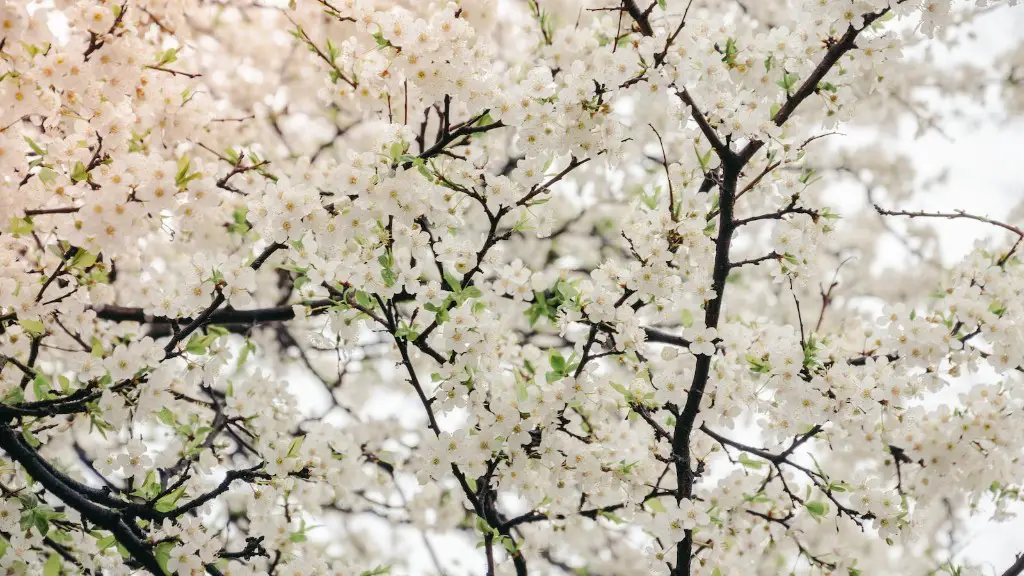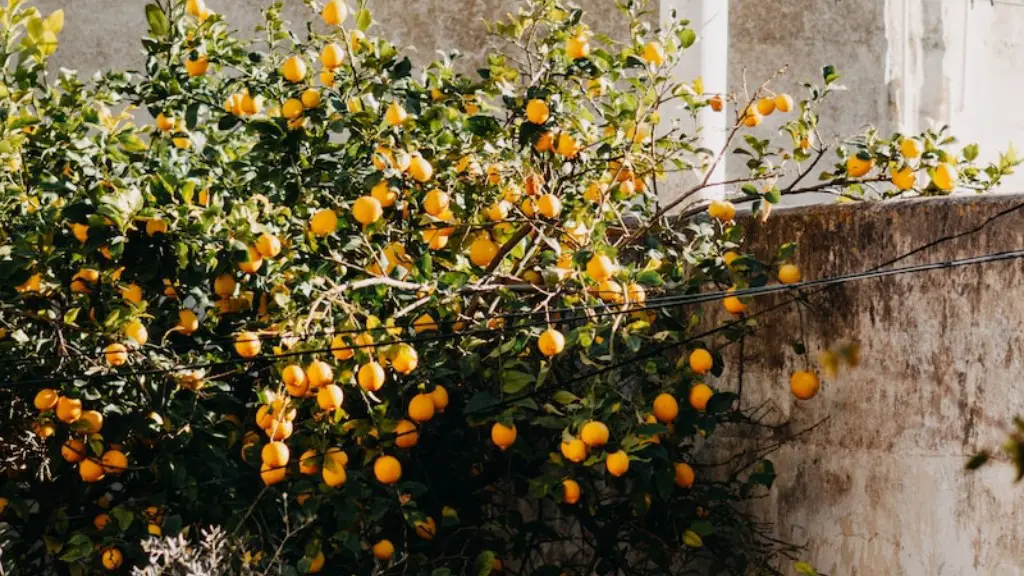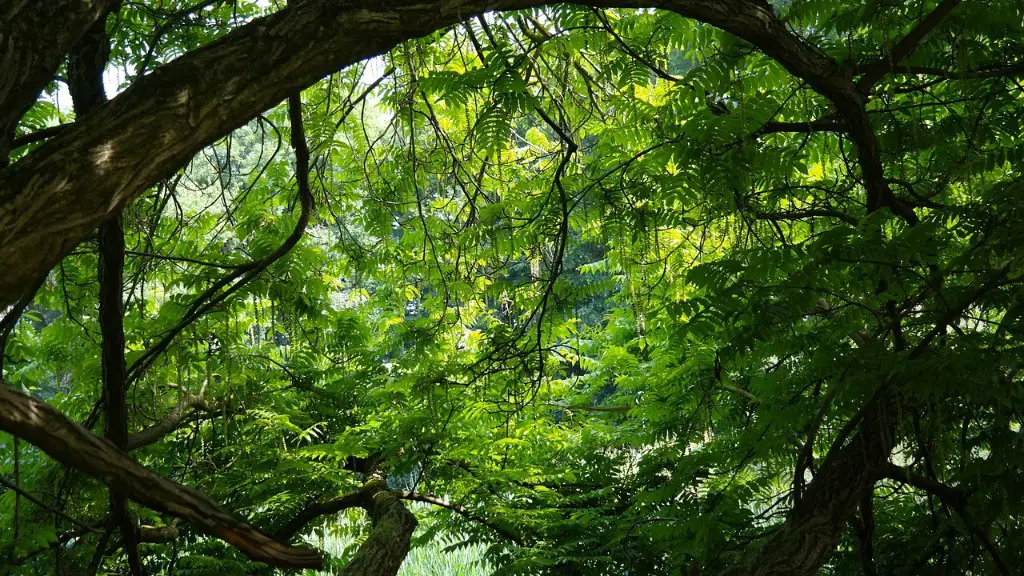Ground Preparation
Before any planting, the ground should be prepared in order to achieve the best possible result. This requires tilling the soil to a depth of at least 12 inches and incorporating a generous amount of compost or manure to increase fertility. If the soil is compacted, it should be broken up and leveled, as this will improve the tree’s root development. The chosen site should allow for ample drainage and receive full sun for a minimum of six hours each day. If possible, the planting location should be protected from strong winds, as strong winds can cause damage to the delicate leaves and branches of a Yoshino flowering cherry tree.
Planting
It is important to realize that, while a Yoshino flowering cherry tree is an ornamental tree, it is still a living being and needs to be planted correctly and provided with adequate space. The planting hole should be the same depth and roughly the same width as the root ball. The root ball should be eased into the hole and firmly packed down with the backfill soil, ensuring that no air pockets remain. Once the soil is evenly mounded, the tree should be watered thoroughly and supported with wood or metal stakes to prevent tipping. The tree should also be mulched with a material such as wood chips or bark for protection and to maintain moisture and soil temperature.
Care and Maintenance
The cherry tree should be watered regularly and deeply throughout the growing season. When watered, the root ball should be sufficiently saturated and any run off should be absorbed. The tree should also be provided with regular feeding throughout the growing season, using a slow release fertilizer or organic compost. If the tree needs to be pruned, this should be done when it is in a dormant state during winter. During the late fall and winter months, the tree should be protected from cold spells and damaging winds by using a shelter or fleece wrap.
Common Problems
Yoshino cherry trees are not immune to disease and pests, but with proper care and preventive measures, many of the common problems can be avoided. Leaf spot and powdery mildew may occur, but with proper pruning and air circulation, this can be minimized. Common pests that may attack the tree include scale, aphids, thrips, white flies, mites and caterpillars. If these pests are present, diligent monitoring and pest control measures may be required.
Care During Winter Months
The best way to ensure that the Yoshino cherry tree is properly protected during the winter months is to wrap the tree in an appropriate material such as burlap, or to use a shelter or fleece wrap. Once the winter season is over, the wrap should be removed in order to allow the tree to receive adequate sunlight and air circulation. It is also important to take measures to ensure that the tree is properly watered throughout the winter months, as this will help the tree to withstand any hard freezes.
Disease Management
Most diseases that may affect Yoshino cherry trees can be minimized by good management practices, such as proper watering and fertilization. A soil test should be done prior to planting in order to determine the pH and fertility, and corrective measures may be needed to ensure that the soil is properly balanced. If a tree does become diseased, the cause should be identified and tackled with appropriate fungicides or insecticides.
Propagation
Yoshino cherry trees can be propagated from their own woody stems, although this is a slow process. A more effective method is to root cuttings from a healthy tree in late summer to early fall and keep them in a sheltered location until spring. Alternatively, the tree can be grafted onto a desirable cultivated rootstock. Once the cutting or graft has taken root, it should be potted and kept in a sheltered environment until it is ready to be transplanted.
Protecting Young Trees
Young Yoshino cherry trees are particularly vulnerable to disease and pests, so it is important to closely monitor the tree and take proactive measures to protect it. The tree should be sheltered from strong winds and maintained with consistent watering and fertilizing. If young trees are exposed to any potential threats, they should be monitored closely and treated with appropriate insecticides or fungicides.
Pruning
Yoshino cherry trees can be pruned for health and aesthetic purposes, although the delicate nature of the tree should be taken into consideration. Pruning should be done when the tree is dormant in order to minimize the risk of infection. When pruning, the tree should be carefully thinned out, paying particular attention to dead or diseased branches. It is important to ensure that the cuts are neat and each branch is pruned at least two-thirds of its length.
Watering
As with any other tree, proper watering is essential for healthy growth and flowering of the Yoshino cherry tree. The tree should be watered deeply and consistently, especially during dry periods. It is important to avoid over-watering and to make sure that the root ball is sufficiently saturated. If possible, it is a good idea to use a soaker hose or water-conserving nozzle to ensure that the tree is adequately hydrated without wasting too much water.
Fertilizing
In order to ensure healthy growth and flowering, it is important to feed the Yoshino cherry tree with a quality fertilizer during the growing season. A slow-release fertilizer should be applied at the beginning of the season and then repeated every four to six weeks. It is important to read the instructions on the fertilizer label carefully so that the tree is not over-fertilized, as this can have a detrimental effect on the tree’s health.
Mulching
Mulching is an important part of caring for a Yoshino cherry tree, as it helps to maintain soil temperature and moisture, as well as helping to control weeds. A layer of organic mulch such as wood chips or bark should be applied to the base of the tree, ensuring that a circle is cleared around the trunk in order to prevent the mulch from being in contact with the tree bark. The mulch should be renewed every year in order to ensure maximum benefit.
Pest Control
In order to protect the tree from common pests, it is important to regularly monitor the tree and take action as soon as any pest-related issues are identified. If the trees are heavily infested, a systemic insecticide may be necessary. Neem oil is also an effective, natural way to combat common pests such as aphids, and it has the added benefit of repelling other pests due to its strong smell. Any products used should be applied as directed on the label.



